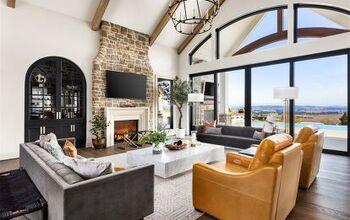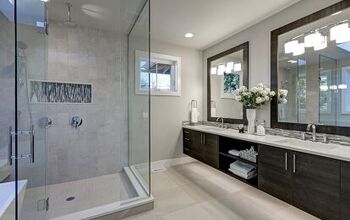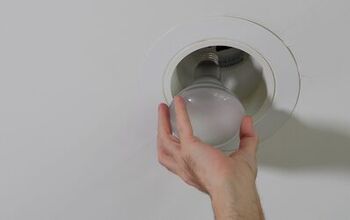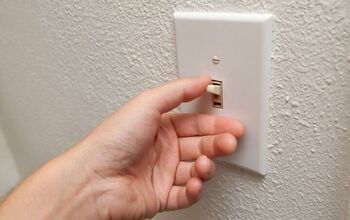Home Design Choices For Reducing Stress

Life is stressful enough between work and other responsibilities, that at the end of the day, most of us want to go home and relax. However, that’s easier said than done if your home’s layout and vibe are stress-inducing. That’s why so many homeowners and renters alike want to find home design choices for reducing stress.
Stress-reducing design choices like sun tunnels and skylights can work wonders to boost natural light and improve comfort at home. You can also reduce stress with color schemes that prioritize comforting tones, like baby blue and mint green. Declutter your home and get creative with storage options, such as visually appealing bins and chests.
It’s also a great idea to prioritize lawn and garden care to give yourself a nice view. This can provide a comforting escape each time you look out the window. Follow along as we explore some essential home design choices for reducing stress.
How To Reduce Stress At Home
1. Get More Sunlight
Seasonal depression can affect anyone, and fixing the problem starts at home. How can you feel relaxed if your home is drab and lacks natural light? You can work wonders to reduce stress at home by increasing natural light with a few design choices.
For example, you can strategically place mirrors and reflective objects across from windows to reflect light. It’s also great to prune or remove the trees and bushes in front of your windows to maximize sunlight. Some homeowners install skylights and sun tunnels if they don’t have enough sun-facing windows.
This adds character to your home and makes the space feel more positive. Glass tile floors and glossy walls and counters can effectively reflect light throughout your house.
2. Add Color
The color of your walls, furniture, and even your decorations can affect your mental state. For example, red is considered a stressful color in that it negatively affects some people. Others may love red, but it is bold and we often associate it with danger.
Bright yellow is another color that can trigger stress for some homeowners. Conversely, green is known to reduce stress and instill a sense of calm. Blue is another common stress-reducing color that comes in many shades.
The more gentle the shade, the less likely the color will induce stress. For example, baby blue and sky blue walls are typically considered comforting. Keep in mind that this is subjective, so it’s best to pick the colors that make you feel calm, regardless of the consensus.
3. Set Up An Aromatherapy Station
Part of the appeal of essential oils is that they can quickly change your mood. Why not brighten your mood while also making part of your home look cooler? One way to do this is to set up a zen aromatherapy station.
For example, you can place a diffuser or wax melt warmer among some relaxing decorations. Keep an array of wax pods and essential oils nearby for easy refills. A nice collection of simple yet elegant figurines and decorations can add character to your aromatherapy station.
Chamomile, lavender, bergamot, rose, and neroli are among the best stress-reducing essential oils. You can have fun and create a unique mixture of oils that provide the best effects. Make sure to keep your essential oils away from your pets, as some are toxic to animals, such as peppermint.
4. Build A Room Around Your Interests
No home is complete without an area where you can explore your hobbies and interests. Granted, you may not have space to dedicate an entire room to your hobby. However, you can at least include decorations, objects, or even instruments that make you happy.
For example, you can set up a music corner with a record player, bookshelf speakers, and your record collection. Some homeowners even keep an easel that’s easy to break down near a set of art supplies they can tuck away. That way, you won’t waste any space or sacrifice the ability to explore your hobbies and passions.
For some people, that may be a wine rack, video game setup, home theater, or comic book collection. Your creativity will have no bounds if you have an entire room to dedicate to your favorite items. Otherwise, you can sprinkle your personality throughout several rooms in your home.
5. Embrace Nature
It’s no secret that houseplants can work wonders to make you feel comfortable at home. Not only are they beautiful, but taking care of indoor plants is quite rewarding. That said, some people fear that indoor plants come along with too much maintenance.
It ultimately depends on the type of plant you choose, as each plant has unique demands. Luckily, it’s easier than ever to research a plant’s needs regarding nutrients, light, and water. Many people find the routine of watering and pruning houseplants quite comforting.
Spider plants, aloe vera, pothos, and begonias are among the easiest indoor plants to take care of. An indoor garden is a relatively affordable investment. All it takes are some lights, pots, watering cans, and nutrients. Succulents are your best bet if you have no gardening experience.
6. Improve Your View
There’s nothing like a drab view to make your home feel stressful and depressing. After all, nobody wants to look out the window and see a yard that lacks character. However, you can provide a nice escape if you give yourself a nice view.
Sometimes, this may take the help of a landscaper, as they can offer quick results. Otherwise, you can put more effort into lawn care and taking care of your plants. Get creative with the color scheme in your yard to make it as visually appealing as possible.
It’s worth investing in an irrigation system if you have a busy schedule and a large yard. That way, you can easily cover more ground and keep your yard looking lush without too much effort.
7. Make The Most Of Your Space
Nothing is comforting about feeling cramped because of clutter. Not only can this induce stress, but it can also attract pests and make your home simply look bad. You can avoid this if you get creative with storage.
Today, you can easily find visually appealing storage bins, chests, and cabinets. It’s also a great idea to organize your belongings into a few piles and decide what to do with them. For example, you may have old clothes, collectibles, and furniture that you don’t have a use for anymore.
In that case, you can sell, donate, or gift them to create more space at home. Online resources like Facebook Marketplace make it easy to find a new home for your old couch or the hoodie you haven’t worn in years.
Summing It Up
Maximize sunlight in your home with a sun tunnel or skylight and use mirrors to reflect light throughout your house to reduce stress. It’s also important to declutter and find creative, visually appealing ways to store your belongings. Put your interests and hobbies on display and embrace nature with indoor plants to curb anxiety and depression at home.
Related Guides:

Nick Durante is a professional writer with a primary focus on home improvement. When he is not writing about home improvement or taking on projects around the house, he likes to read and create art. He is always looking towards the newest trends in home improvement.
More by Nick Durante










![How Much Weight Can a 4×4 Support Horizontally? [It Depends!]](https://cdn-fastly.upgradedhome.com/media/2023/07/31/9070333/how-much-weight-can-a-44-support-horizontally-it-depends.jpg?size=350x220)
![10 Best Zero Turn Mowers – [2022 Reviews & Ultimate Buyer's Guide]](https://cdn-fastly.upgradedhome.com/media/2023/07/31/9070522/10-best-zero-turn-mowers-2022-reviews-ultimate-buyer-s-guide.jpg?size=350x220)




![10 Most Dangerous Neighborhoods in Baltimore [Updated]](https://cdn-fastly.upgradedhome.com/media/2023/07/31/9075655/10-most-dangerous-neighborhoods-in-baltimore-updated.jpg?size=350x220)










